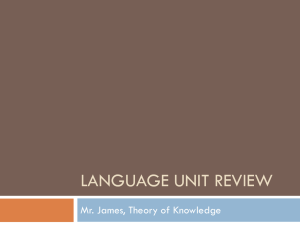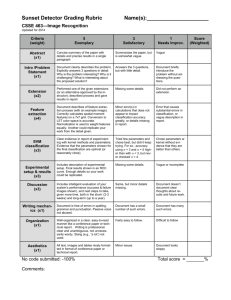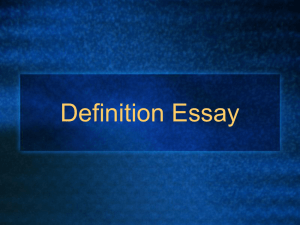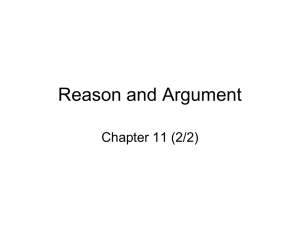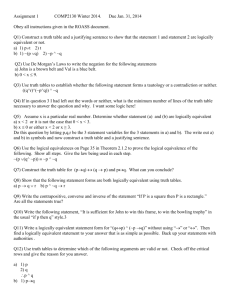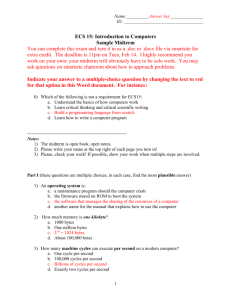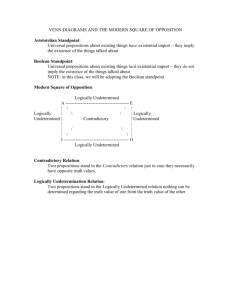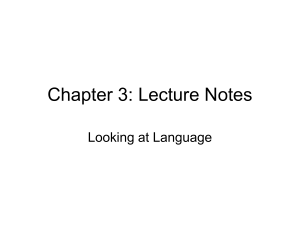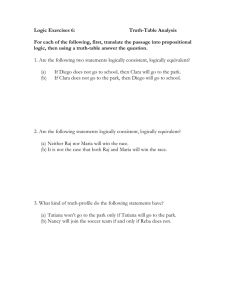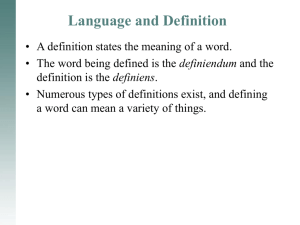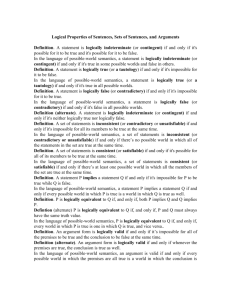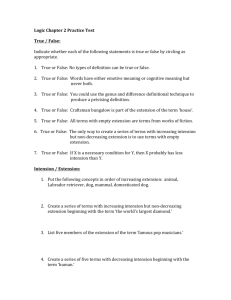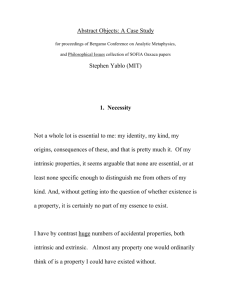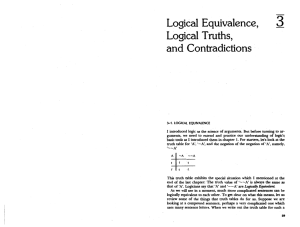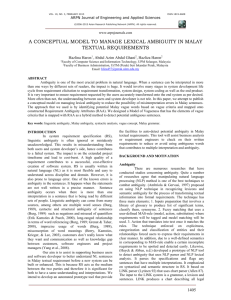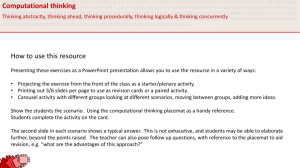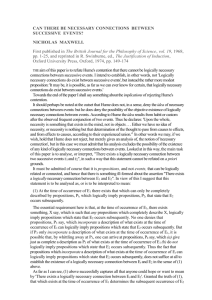Elements of Logic - Philosophy HKU
advertisement
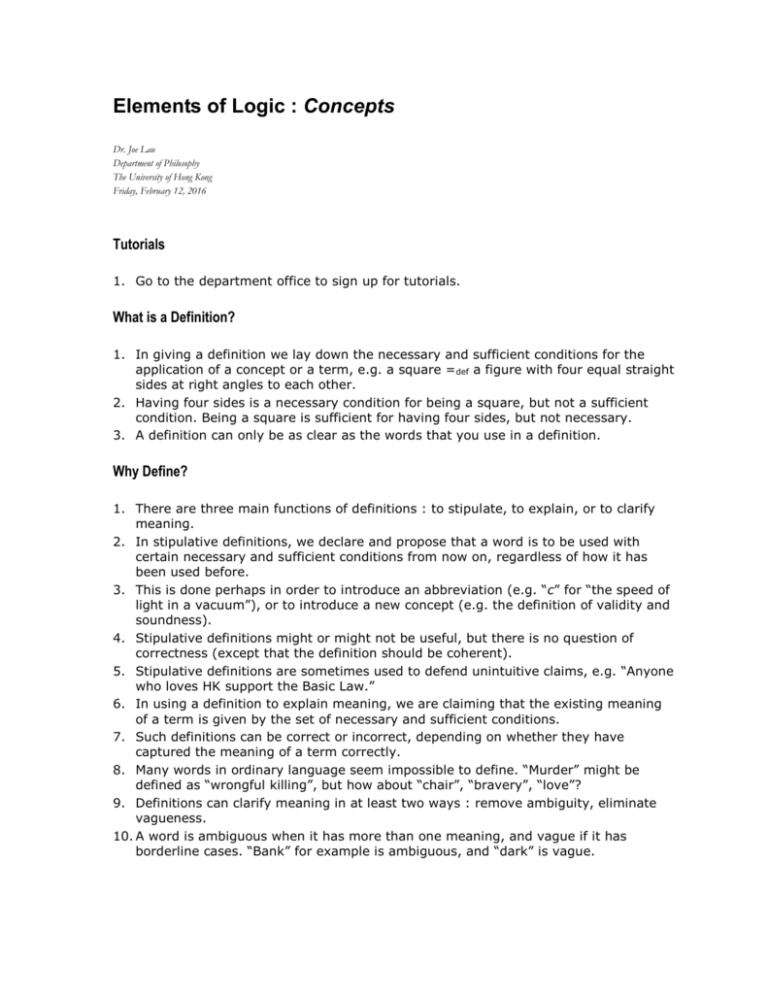
Elements of Logic : Concepts Dr. Joe Lau Department of Philosophy The University of Hong Kong Friday, February 12, 2016 Tutorials 1. Go to the department office to sign up for tutorials. What is a Definition? 1. In giving a definition we lay down the necessary and sufficient conditions for the application of a concept or a term, e.g. a square =def a figure with four equal straight sides at right angles to each other. 2. Having four sides is a necessary condition for being a square, but not a sufficient condition. Being a square is sufficient for having four sides, but not necessary. 3. A definition can only be as clear as the words that you use in a definition. Why Define? 1. There are three main functions of definitions : to stipulate, to explain, or to clarify meaning. 2. In stipulative definitions, we declare and propose that a word is to be used with certain necessary and sufficient conditions from now on, regardless of how it has been used before. 3. This is done perhaps in order to introduce an abbreviation (e.g. “c” for “the speed of light in a vacuum”), or to introduce a new concept (e.g. the definition of validity and soundness). 4. Stipulative definitions might or might not be useful, but there is no question of correctness (except that the definition should be coherent). 5. Stipulative definitions are sometimes used to defend unintuitive claims, e.g. “Anyone who loves HK support the Basic Law.” 6. In using a definition to explain meaning, we are claiming that the existing meaning of a term is given by the set of necessary and sufficient conditions. 7. Such definitions can be correct or incorrect, depending on whether they have captured the meaning of a term correctly. 8. Many words in ordinary language seem impossible to define. “Murder” might be defined as “wrongful killing”, but how about “chair”, “bravery”, “love”? 9. Definitions can clarify meaning in at least two ways : remove ambiguity, eliminate vagueness. 10. A word is ambiguous when it has more than one meaning, and vague if it has borderline cases. “Bank” for example is ambiguous, and “dark” is vague. 11. Ambiguity can be one source of verbal dispute and giving different definitions of the two meanings can help resolve such disputes. (William James’s squirrel, “Can men and women be equal?”) 12. Vague concepts are useful in everyday life where precision is not needed, but sometimes when we need to be more precise we can do so by giving a definition (heavy rain, drunk driving). Different Notions of Possibility 1. There are different things we might mean when we say that something is or is not possible, or whether certain things can or cannot happen. Here are three. There might be others. 2. Logical possibility – if something is logically possible, then it is consistent with the laws of logic, e.g. it is logically impossible that something both exists that does not exist, and logically possible that pigs can fly. 3. Empirical possibility - whether something is consistent with the laws of nature. For example, it is logically possible to travel faster than the speed of light, but this might not be empirically possible. 4. Technical possibility - whether something can actually be achieved using current technology. It is empirically possible to travel to New York from Hong Kong in ten minutes, but it is not technically possible now. 5. When discussing a question such as “Can computers think?”, it is important to clarify which sense of possibility is meant by “can”. Syncategorematic Terms 1. Categorematic terms are those which has a meaning on its own. Syncategorematic terms are those which depend on the context to supply a complete meaning, whether explicitly or implicitly. 2. Examples : it is meaningful to say that something is or is not important or useful only relative to certain purposes. Also whether two things are similar or not depends on which aspects of similarity we are talking about. Other cases : “enough” 3. Some other interesting cases : are terms like “good” or “tall” syncategorematic?
